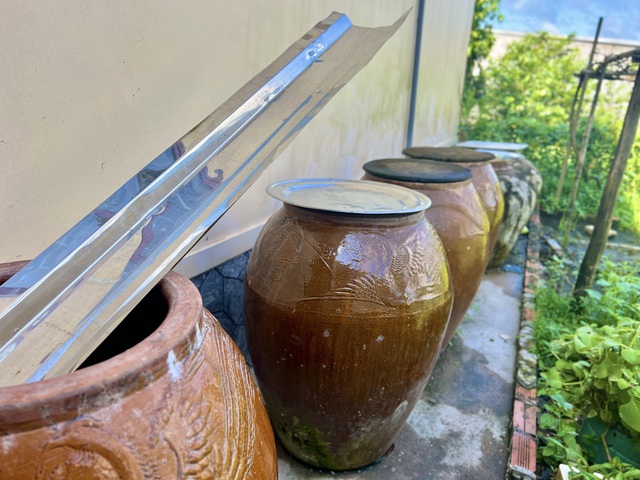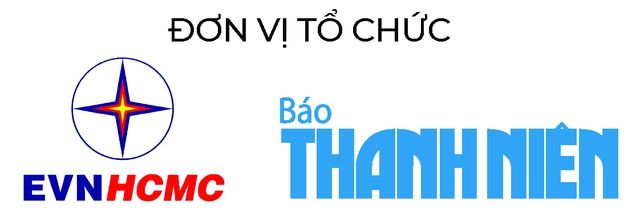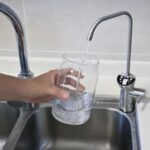Even though water pumping has become easier than ever with the advent of electric pumps and the availability of tap water in rural areas, my father still chooses to keep the old rainwater harvesting system, consisting of large clay pots and even investing in additional stainless steel tanks. The recent severe and prolonged droughts in the Mekong Delta have proven the wisdom and urgency of his forward-thinking approach to water conservation and resource management.

Our home’s rainwater harvesting system – a gift from nature.
Photo: TGCC
My father has always been keen on weather forecasts, especially during the rainy season. He believes that the quality of rainwater in rural areas is still relatively good compared to urban areas or industrial zones, which often face pollution and dust issues. With the annual rainfall being quite abundant, he starts preparing our rainwater harvesting system before the rainy season arrives. He cleans the tanks and ensures that the system is ready to collect rainwater. After discarding the initial rainfall, which may contain impurities, the rainwater system is ready for use, running parallel to our tap and filtered water supply.
Our house has a tiled roof with a spacious area, which is ideal for rainwater collection. My father carefully designed a household-scale rainwater utilization system by considering the available space. Instead of building a cement tank, he decided to reuse the large clay pots we already had. However, he plans to construct a larger cubic tank in the future to optimize space and store a more considerable volume of water.
He measured the distances and purchased the necessary equipment for installation. The rainwater gutters are made of stainless steel, and the water is directed from the gutters into the pots through large plastic pipes. Smaller pipes are used to draw water from the pots for direct use. While the water level in the pots decreases with usage, it is replenished during rainfall.
Although rainwater is not as pure as filtered or tap water, it is cleaner than water from wells, ponds, rivers, or streams. By utilizing rainwater for tasks like laundry, dishwashing, and gardening, we reduce the strain on groundwater and surface water resources. This is especially important in the context of decreasing water flow from the Mekong River’s upstream areas. Additionally, continuous deep groundwater extraction can lead to land subsidence.
To ensure the best water quality, my father installed the gutters and pipes at a certain height, keeping the surrounding area clear of debris and fallen leaves. A membrane is placed inside the pots, and their mouths are tightly covered. He also periodically cleans the pots to maintain hygiene.
As a result, our house has two parallel water outlets. The rainwater outlet serves as an initial cleaning step, followed by a final rinse using tap water from the primary outlet.
In addition to the rainwater directly used for daily chores, my father also installed gutters to channel excess rainwater into unused pots, which are covered and saved for the dry season. This practice not only saves water but also effectively conserves electricity. The frequency of using the water pump motor is minimized, especially during the rainy season, resulting in pleasantly surprising electricity bills for my mother.
A reward of 130 million VND and attractive prizes await the winner
Following the success of the previous two seasons, the Electricity Saving as a Habit 3: Safety – Saving and Sharing Experiences contest this year expands its message: Using electricity safely and economically to prevent accidents and fires.
We are looking for authentic stories, useful experiences, and innovative ideas from your life, household, or organization to promote smart, sustainable, and safe electricity usage.
Submission period: From April 22 to July 22, 2025.
Send your entries to: [email protected] (Please note: Entries for the contest “Electricity Saving as a Habit” in the email subject)
Or send it by postal mail to: Thanh Nien Newspaper, 268-270 Nguyen Dinh Chieu, Vo Thi Sau Ward, District 3, Ho Chi Minh City.
For detailed rules, please visit thanhnien.vn.















